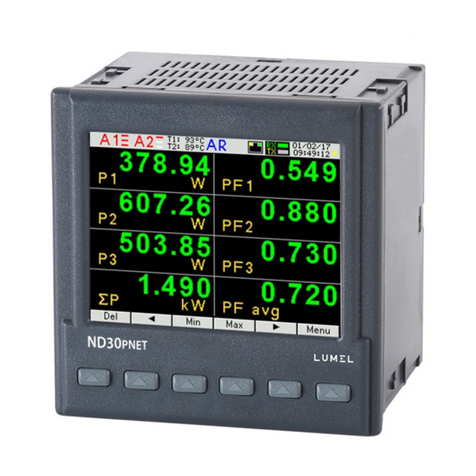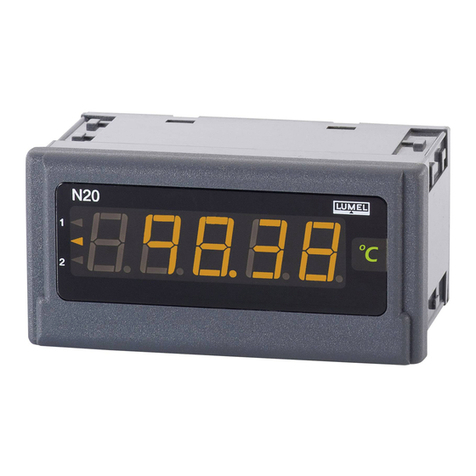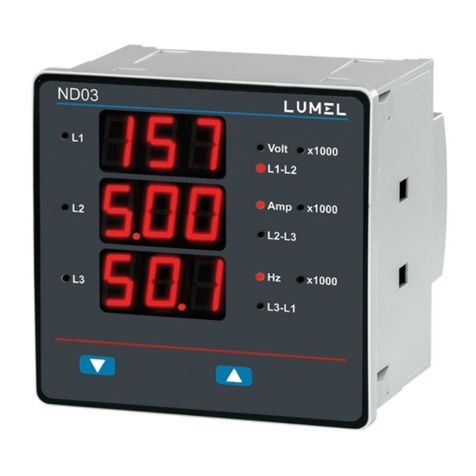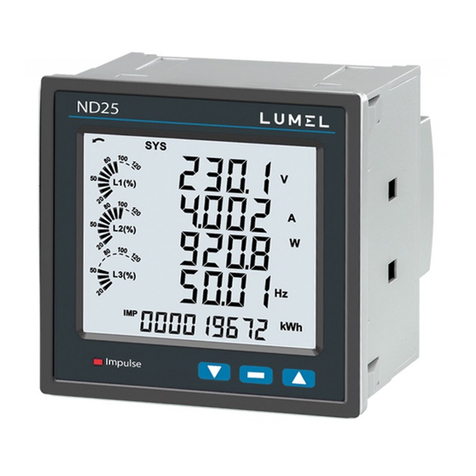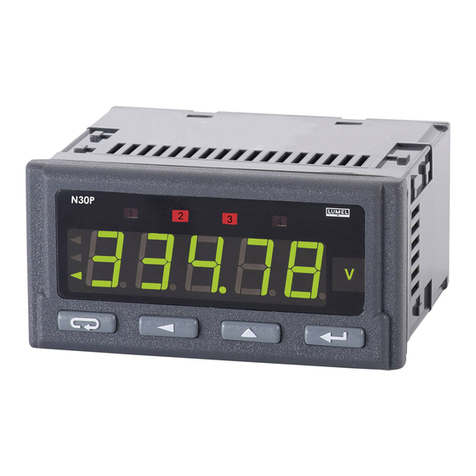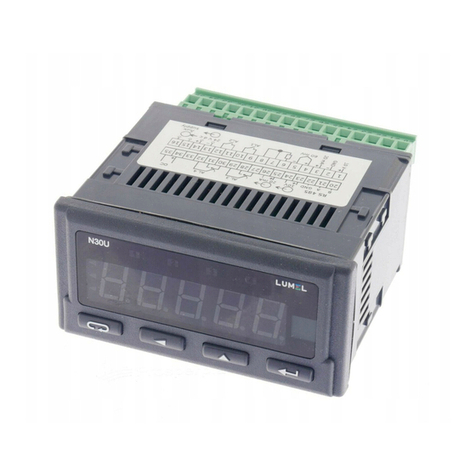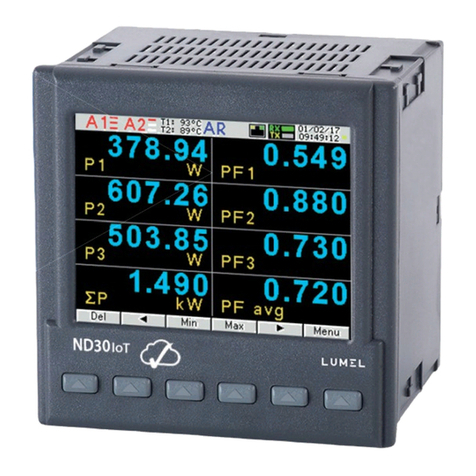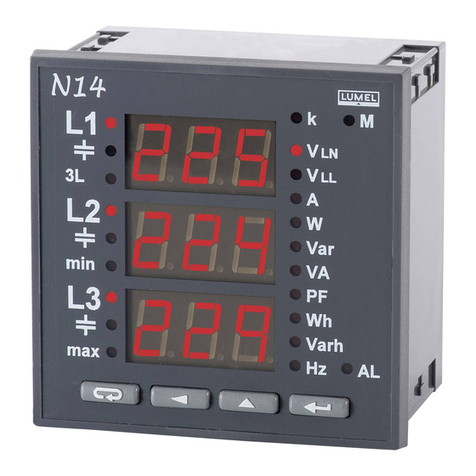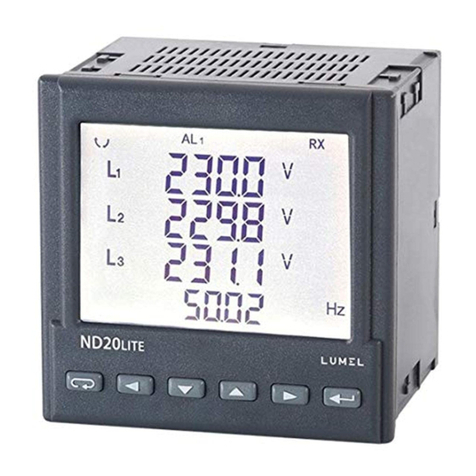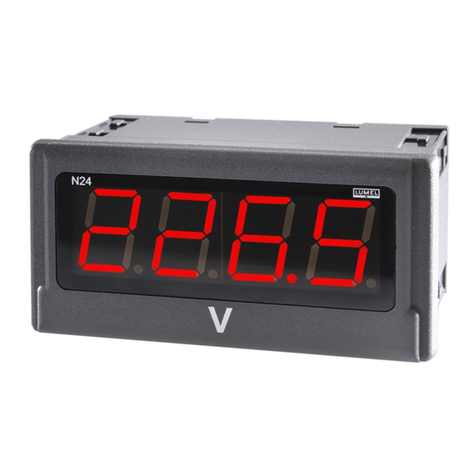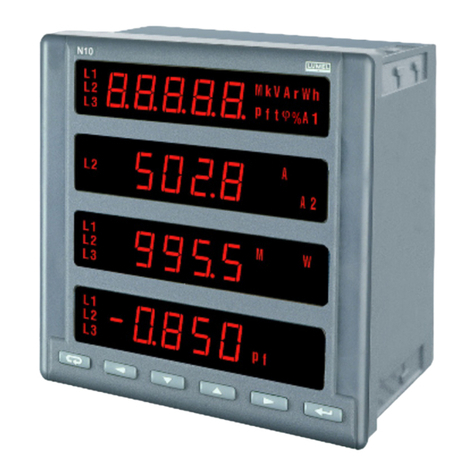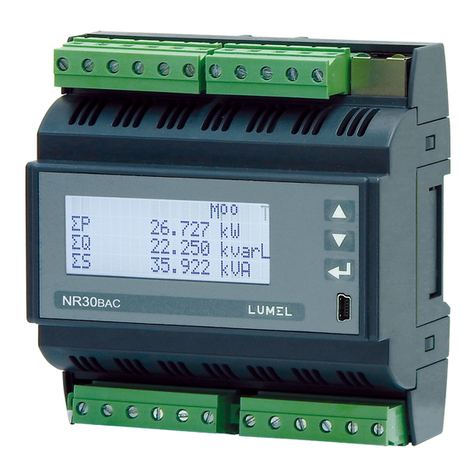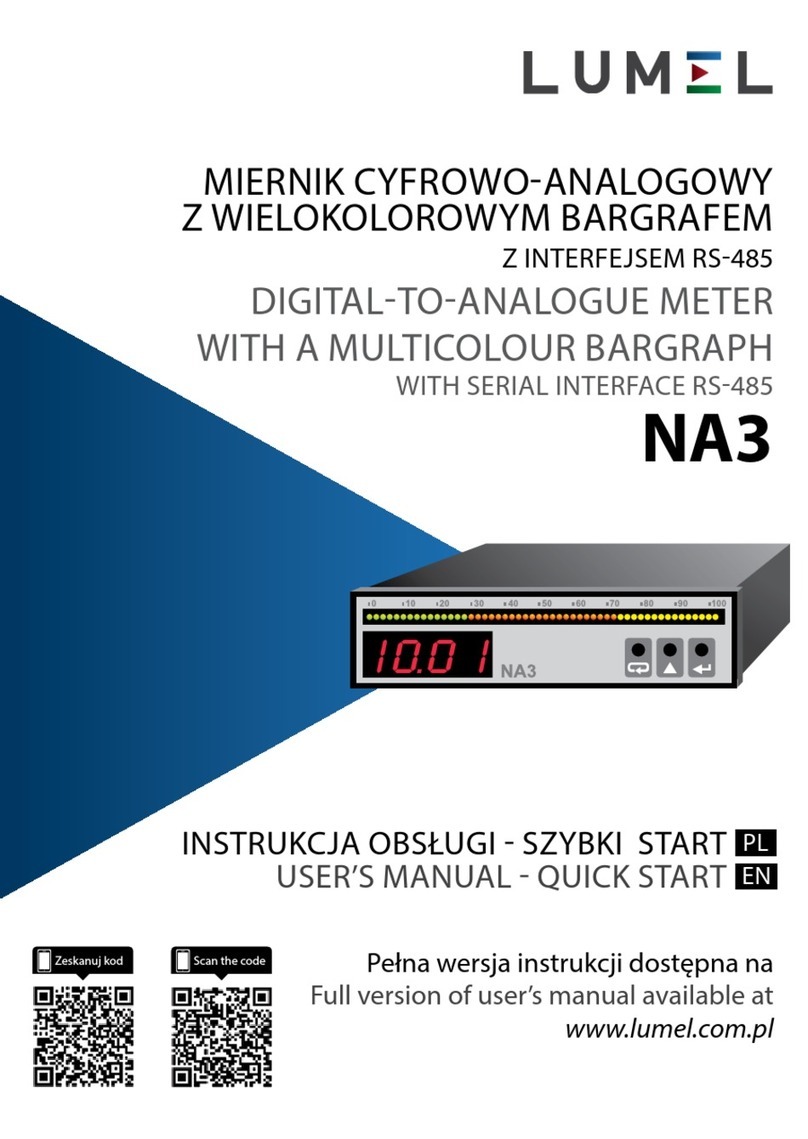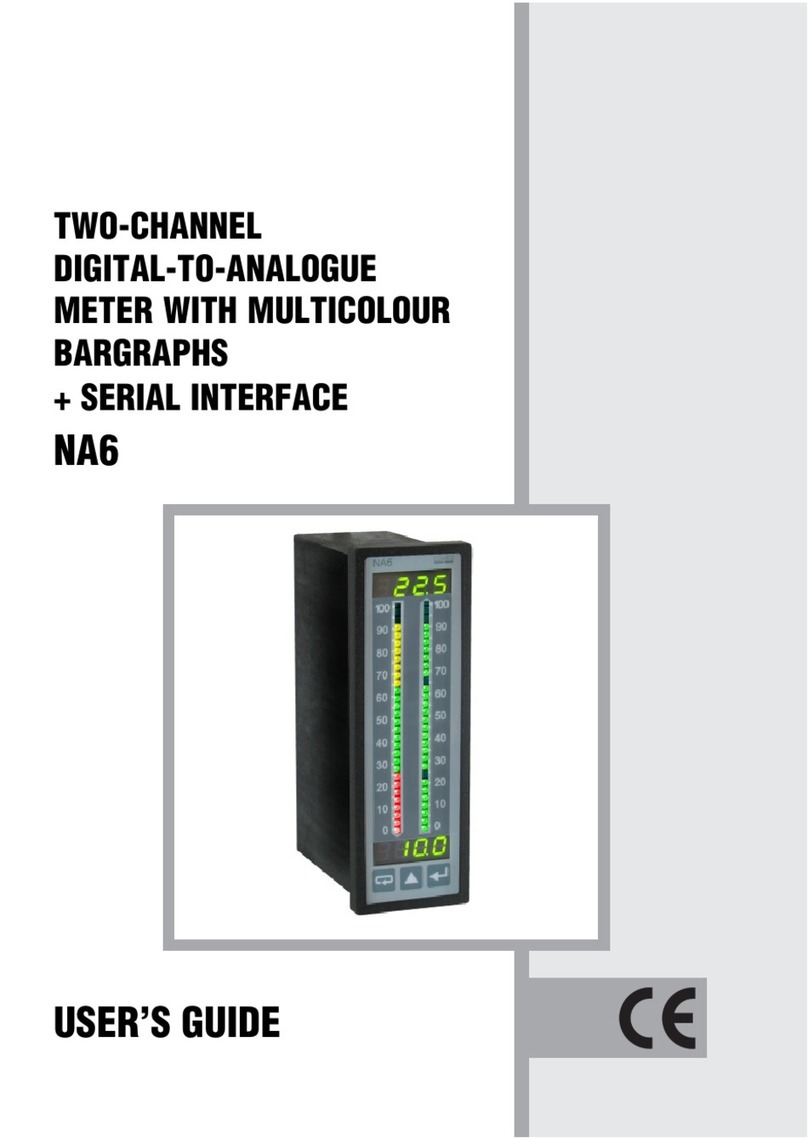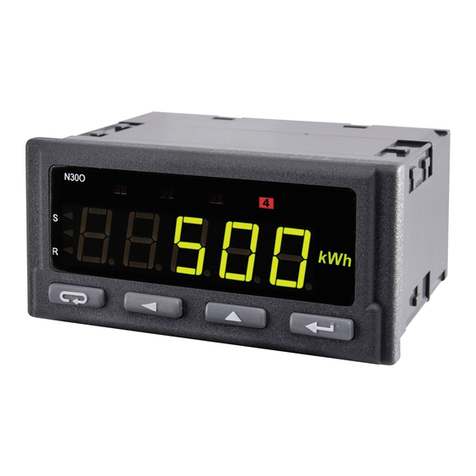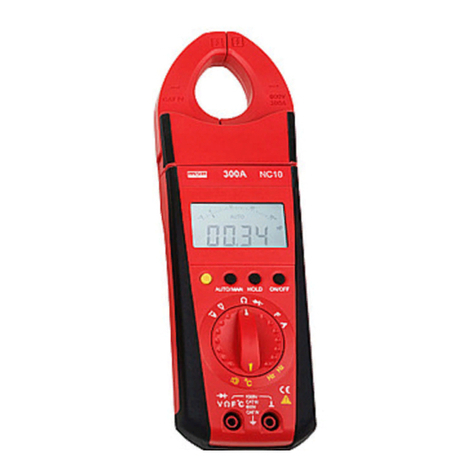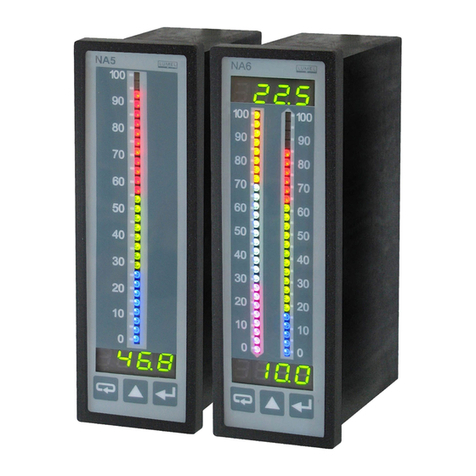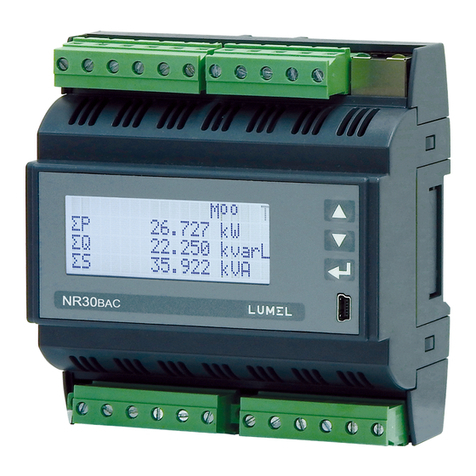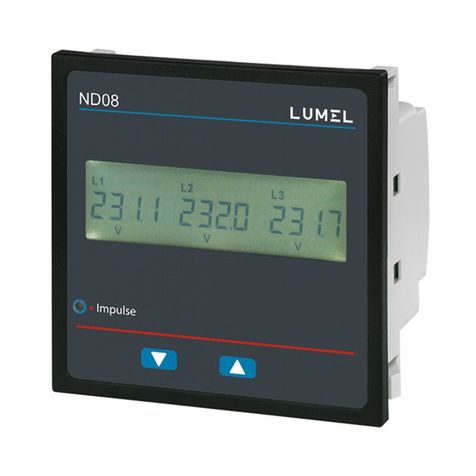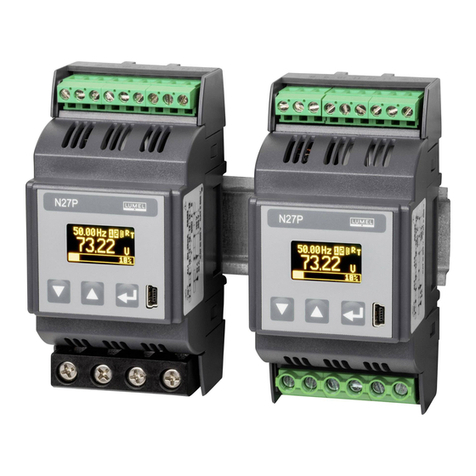N32U User's manual 2
Contents
1 Application.......................................................................................................................................3
2 Meter set...........................................................................................................................................5
3 Basic requirements, operational safety.............................................................................................5
4 nstallation........................................................................................................................................5
4.1 nstallation method...................................................................................................................5
4.2 External connection diagram....................................................................................................7
4.3 Examples of connecting the external transducers ..................................................................10
5 Service............................................................................................................................................11
5.1 Description of the frontal plate...............................................................................................11
5.2 Buttons' functions...................................................................................................................13
5.3 Programming meter parameters..............................................................................................14
5.3.1 How to change quantity of a selected parameter............................................................16
5.3.2 Programmable meter parameters, default parameters.....................................................17
5.4 Meter functions.......................................................................................................................21
5.4.1 Measurement...................................................................................................................21
5.4.1.1 Averaging the measuring quantity...........................................................................22
5.4.1.2 Minimum and maximum measuring values............................................................23
5.4.1.3 Mathematical functions...........................................................................................23
5.4.1.4 ndividual characteristic..........................................................................................23
5.4.2 Analog output..................................................................................................................25
5.4.3 Alarm outputs..................................................................................................................26
5.5 RS-485 interface.....................................................................................................................27
5.5.1 Connection......................................................................................................................27
5.5.2 Description of the MODBUS protocol implementation.................................................28
5.5.3 mplemented functions of MODBUS protocol...............................................................28
5.5.4 Map of the registers.........................................................................................................29
5.5.4.1 Registers 4000 – 4054.............................................................................................29
5.5.4.2 Registers 4200 – 4233.............................................................................................34
5.5.4.3 Registers 7500 – 7515 and 7000 – 7031.................................................................35
5.5.4.4 Registers 7600 – 7677 and 7200 – 7355.................................................................35
6 Error codes......................................................................................................................................38
7 Technical data.................................................................................................................................39
8 Ordering code.................................................................................................................................42












